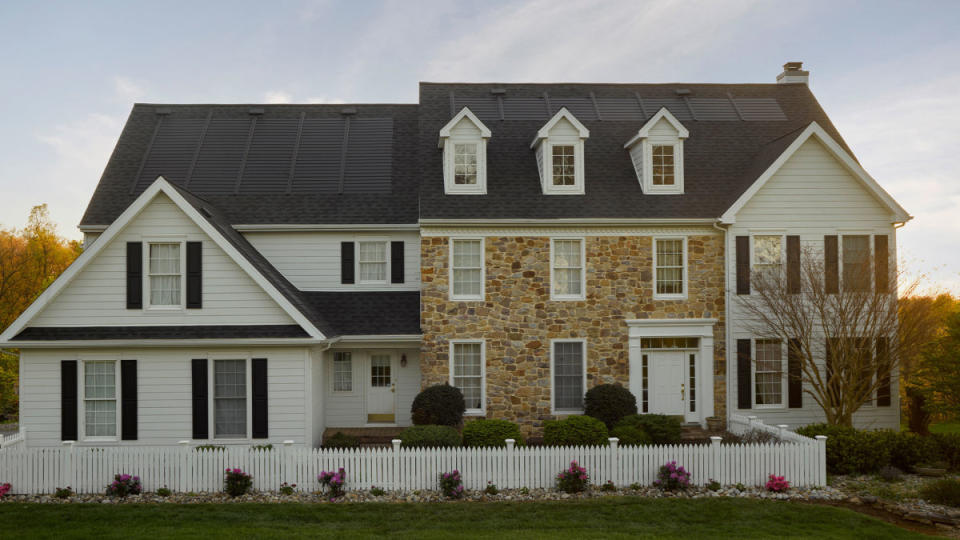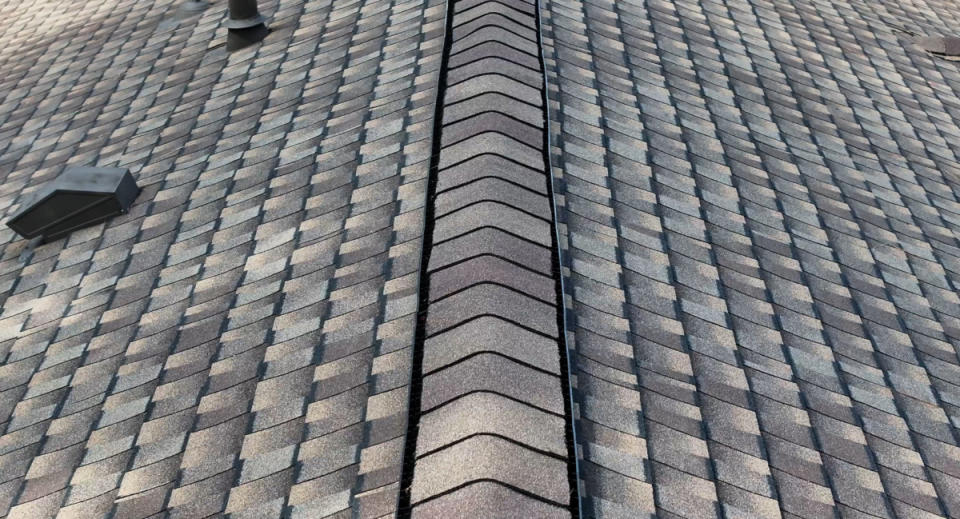The Latest and Greatest in Residential Roofing Trends
Roofing technology has undergone a transformational shift, thanks in part to integrated solar technology and advancements in material durability. In this innovative era, modern roofing solutions seamlessly integrate aesthetics, durability, and environmental responsibility, shaping a future where roofs play a pivotal role in sustainable living.
We asked the experts at GAF, a Standard Industries company, and the leading roofing and waterproofing manufacturer in North America for their point of view on what's to come. Here's what they had to report on:
Emerging types of roofing materials
Trending roofing styles and designs
The future of solar and environmentally conscious solutions

Courtesy of GAF
Eco-Conscious Roofing Solutions
“There is a growing demand for environmentally conscious roofing solutions or materials, particularly solar,” shares Reynolds Holmes, VP Product, GAF Energy.
“A recent survey showed that solar energy was the most popular energy form in the world, with 68% of consumers supporting solar. Residential solar shows incredible opportunity for growth. While just 4% of homeowners say they’ve installed rooftop solar, more than 40% of homeowners say they have “seriously considered’ installing rooftop solar.”
With more than 5 million American homeowners replacing their roof each year, there is a tremendous opportunity for roofers to provide a solar roof that is durable, reliable, and attractive. GAF Energy’s Timberline Solar™ Energy Shingle is a transformative, award-winning solar product which integrates with traditional shingles to create a sleek and attractive look for the customer. Timberline Solar™ boasts an industry-defying depth of less than a quarter inch and meets a host of rigorous third-party safety standards covering both roofing and solar. Solar roofs, installed by roofers, are the future of residential solar.
Related: Kitchens and Bathroom Renovations Used to Sell Homes—Not Anymore
Advancements in Integrated Solar Shingles
“As the need and demand for solar continues to grow, we believe that roofing and solar energy materials will continue to merge in the coming years,” predicts Holmes. “Our company’s solar roofing product, Timberline Solar™ is the first product to merge solar with traditional roofing materials. Timberline Solar is installed with a nail gun just like a typical asphalt roof shingle. We expect to continue to see increased adoption of integrated solar as the technology and aesthetic continue to improve.”
Added Durability to Withstand Severe Storms
“Hailstorms continue to affect many parts of the United States, and roofs tend to see the brunt of the impact damage. SBS polymer–modified asphalt technology helps protect homes from the elements,” advises Jamie Cito, Senior Director Product Marketing at GAF.
He adds, “Polymer modification makes asphalt more durable, rubber-like, and super-flexible — to help reduce stress when impacted. When this material is used to make roofing shingles, it results in a shingle with excellent flexibility and durability, plus increased impact resistance. It is why our Timberline® AS II shingles are made with our proprietary SBS-modified asphalt formulation and pass UL's toughest impact-resistance test — UL 2218 Class 4. Shingles that passed this test were able to withstand the impact of a steel ball that caused cracks and ruptures through other shingles. These shingles may also qualify for insurance discounts in hail-prone areas. But before deciding on which Impact-resistant shingle to install on your home, make sure to ask the question: Does it have SBS?”
Related: Are You Prepared for an Early and Severe Winter?
Dimensional Shingles Are In
“Muted colors are out, and dimension is in. Homeowners are treating their roof as a major aesthetic factor to their curb appeal, instead of just an accent,” notes Cito. “Our GAF Timberline UHDZ® shingles feature our Dual Shadow Line, which provides an enhanced shadow effect. This makes the roof shingles look thicker and more refined, for an unmistakable visual difference compared to standard shingles. For bolder color blends, GAF Timberline HDZ shingles come in a variety of Harvest Blend colors that can marry the colors of your front door, shutters, and siding, all in one shingle.”

Courtesy of GAF
Related: These 3 Bad Things Can Happen When You Keep Leaves on Your Roof
Things to Consider for a New Roof
Material quality. Consider durability and longevity for various weather conditions.
Average costs and budget. Evaluate upfront material costs and long-term value, including maintenance and energy savings. Calculate your roof size and the square foot cost for ease of comparison.
Roof type. Do you have a sloped roof? Flat roof? Green roof? A roofing expert can help you learn more about the best options for their roof type.
Energy efficiency. Look for reflectivity and insulation properties to make your home energy efficient and decrease energy costs.
Aesthetic appeal. Choose a color and style that matches the home's overall aesthetics and architecture.
Weather resistance. Extreme weather conditions happen. Prioritize materials that provide resistance against wind, storms, and water damage during inclement weather.
Proper maintenance requirements. Opt for materials with minimal upkeep and resistance to mold and algae.
Warranty and guarantees. Consider both manufacturer and installation warranties for peace of mind.
Environmental impact. Consider sustainability and the environmental impact of manufacturing and disposal. From solar to recycled materials and natural materials, homeowners should research to determine the best type of roofing material for their home.

